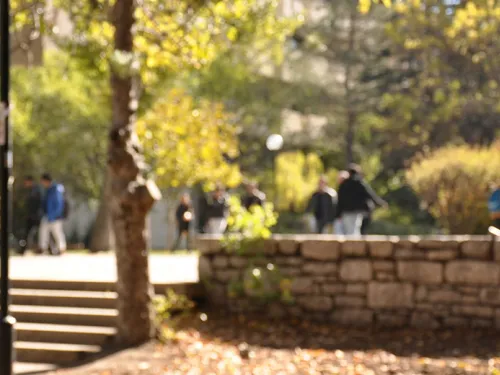
Related Content
Over the course of the past several years, and particularly in the wake of the October 7, 2023 Hamas terrorist attacks, there has been a disturbing rise in antisemitism in K-12 schools. According to ADL’s most recent Audit of Antisemitic Incidents, in 2024 there were 860 antisemitic incidents in K-12 schools. The environment in many K-12 schools continues to expose Jewish children to concerning levels of hate.
We all have a role to play in confronting and countering antisemitism early and aggressively, whenever and wherever it emerges.
As a leading provider of antisemitism and anti-bias education for students and educators in K-12 schools, ADL is ready to support school districts and education professionals across the country in this critical work.
Outlined below are ADL’s recommendations of best practices to guide education professionals, State Education Departments and school administrators in their work to counter antisemitism in their K-12 schools.
1. Clearly define antisemitism and ensure consistent application.
Antisemitism is a complex and nuanced form of oppression that is often not well understood. This is in large part because antisemitism is more than just a form of religious hatred. It can take the form of:
- Racialized bigotry, such as swastikas, Nazi salutes, or Holocaust jokes based on white supremacist ideology.
- Bigotry grounded in conspiracy theories, such as conspiracies featuring myths about Jewish power and control.
- Anti-Zionist[1] harassment or discrimination, such as excluding Jewish students from school activities based on their actual or perceived historic, cultural, religious, and/or ethnic identification with Israel.
The International Holocaust Remembrance Alliance (IHRA) Working Definition has become the preeminent definitional tool used to evaluate manifestations of antisemitism today, and it includes useful examples of discriminatory anti-Israel acts that cross the line into antisemitism. It is also the definition that the U.S. Department of Education is required to consider when investigating Title VI complaints of antisemitic harassment and discrimination in K-12 schools.
We urge school districts across the country to use the IHRA Working Definition of Antisemitism when responding to reports of antisemitic harassment or discrimination in K-12 schools and to assess the comprehensiveness of education programming that addresses antisemitism.
Examples:
- Chappaqua Central School District Board of Education: This district in New York passed a Resolution on Antisemitism, and in it, they define antisemitism using the IHRA definition.
- Michigan: The State Board of Education passed a Resolution on Increased Teaching and Training about Antisemitism. In it, they reference the IHRA definition of antisemitism.
- Washington: The Washington Office of Superintendent of Public Instruction adopted the IHRA definition in their document entitled Combatting Antisemitism Through Education.
2. Educate students, teachers and community members about antisemitism, and ensure robust holocaust education in school.
Antisemitism is sometimes overlooked in programming focused on countering bias and fostering diversity, equity and inclusion in K-12 schools. At the same time, many school districts either do not include in their curriculum content focused on Jewish history, identity, and culture, or have proposed or considered content that veers into antisemitism and/or extreme anti-Israel bias. This is particularly concerning at a time of rising antisemitic incidents across the country. School districts must ensure that topics like Jewish identity, Jewish history and manifestations of antisemitism are properly incorporated in K-12 curricula.
Schools should take similar steps to ensure that Holocaust and genocide education are covered in the classroom. Holocaust and genocide education is an effective, proven lever to combat antisemitism in society; and yet, unfortunately, the Holocaust is still not universally addressed in K-12 curricula. It is therefore not surprising that recent surveys have found an alarming lack of knowledge about the Holocaust among younger generations. This is deeply concerning, as the latest research from ADL’s Center for Antisemitism Research (CAR) suggests a direct relationship between deficiencies in Holocaust education and an increase in prejudicial, antisemitic beliefs.
Fortunately, there is broad public support for expanding Holocaust education: A 2023 ADL survey revealed that more than 90 percent of Americans believe high school students should learn about the Holocaust, with 87 percent agreeing that high school students should learn about antisemitism throughout history and in the present. At the same time, a recent ADL poll looking at antisemitic attitudes in America found that respondents whose schools taught specifically about the Holocaust harbored the least antisemitic prejudice, compared to those who learned about the Holocaust elsewhere.
We urge school districts to:
- Formally include antisemitism awareness education in all anti-bias and non-discrimination programming.
- Incorporate into the curriculum content focused on Jewish history and identity.
- Adopt Holocaust and genocide curricula offerings.
- Provide mandatory antisemitism awareness and Holocaust education professional development trainings for all educators.
We also urge school districts across the country to adopt and/or expand their Holocaust and genocide curricular offerings, to ensure current and future generations understand the importance of confronting antisemitism and hate and the dangers of remaining silent. Additionally, we urge school districts to incorporate Holocaust education into their professional development for teachers and administrators.
Examples:
- California: In 2021, the Governor announced the Governor’s Council on Holocaust and Genocide Education, which is tasked with identifying instructional resources to teach students about the Holocaust and genocide.
- New Jersey (A4720): In 2023, New Jersey passed a law requiring the New Jersey Commission on Holocaust Education to craft and distribute a survey for public schools relating to educational instruction on the Holocaust and genocide. This survey would measure how each school district was meeting the existing requirement to include Holocaust and genocide instruction in the curriculum.
- Virginia (HB 2409): Requires the Superintendent of Public Instruction to select and distribute to all local school divisions a teacher’s manual, with instructions for its use in the classroom, that emphasizes the causes and ramifications of the Holocaust and genocide. Each local school division shall provide grade-appropriate portions of the manual to history and literature teachers of these classes.
We launched a #LearnToNeverForget campaign to encourage expansion of Holocaust education across the country and to encourage states that already offer Holocaust education to audit their programming to ensure its effectiveness.
ADL has a wealth of resources available on our website that focus on helping students and educators understand antisemitism and Jewish identity, from both a historic and contemporary perspective.
- Echoes and Reflections’ Holocaust education program and resources, available at no cost to schools.
- A digital mini-lesson, Antisemitism: What do Educators Need to Know, to help educators begin learning about antisemitism and how to recognize it.
- Awareness to Action®, a new digital course for middle and high school students to learn how young people of all identities can act as allies to challenge antisemitism and other forms of bias.
- Lesson Plans, including “Historical Antisemitism,” “Contemporary Antisemitism,” and “Antisemitic Incidents: Being an Ally, Advocate and Activist.”
- Student activities, including “What is Antisemitism?,” and “Why Didn’t Antisemitism End After the Holocaust.”
3. Clearly communicate and enforce all policies and protocols, including codes of conduct and anti-bullying, anti-harassment and anti-discrimination policies, and ensure robust reporting mechanisms are in place.
It is critical that all school districts have clear and transparent non-discrimination, anti-harassment and anti-bullying policies (including policies pertaining to cyberbullying); clear and transparent mechanisms for students, parents, teachers and support staff to report hate incidents and acts of antisemitism to school administrators; and clear and transparent communication protocols so that students and families are consistently informed about the steps taken in response to reported incidents.
Schools must also be mindful of cases where student speech infringes or interferes with the rights of other students, or causes a material and substantial disruption in school. In such cases, in order to protect the rights of all students, schools may need to take action to intervene.
We urge school districts to ensure that robust and comprehensive policies and protocols are in place and fully enforced, consistent with state and federal law, to effectively respond to antisemitic discrimination, harassment and bullying in K-12 schools, and to take steps to ensure full transparency regarding these policies.
Examples:
- California (SB 1421): A bill has been introduced that would require the California Department of Education to establish an Office of Civil Rights to investigate complaints and report on the frequency of incidents of discrimination, harassment, intimidation and bullying at school districts, county offices of education and charter schools.
- Maryland (HB 324): Pending bill which would require each member of a county board of education to complete certain anti-bias training at least once during the member’s term.
- Washington (RCW 28A.642.090): Requires all school districts and other local education agencies to designate at least one employee to be responsible for monitoring and coordinating compliance with state non-discrimination laws and guidelines.
- California (Education Code, Section 220): States that no person shall be discriminated on the basis of disability, gender, gender identity, gender expression, nationality race or ethnicity, religion, sexual orientation, in any program or activity conducted by an educational institution that receives, or benefits from, state financial assistance.
- Maryland (HB 86): Pending bill which would require institutions of higher education and local school systems within the state to designate a Title VI Coordinator to ensure compliance with Title VI of the Civil Rights Act of 1964.
- Crisis, Controversy and Activism: Tips and Guidance for K-12 Schools
- Bullying and Cyberbullying Prevention Strategies and Resources
- Resource from the United States Government on bullying
4. Ensure that schools do not teach problematic content that amplifies antisemitism and delegitimizes/demonizes the State of Israel and its existence.
Schools must ensure that lesson plans are free from antisemitic bias toward Jews or the State of Israel, and that they do not unintentionally amplify or perpetuate antisemitic beliefs or attitudes in school community. It is critical that lessons on Middle East history, Israel, Palestine, Judaism and the Holocaust are taught in a fact-based and pedagogically sound way. ADL has a number of resources that can be used to support schools, including a guide on recognizing bias when Israel is in the headlines.
Antisemitic or biased language must be addressed immediately to prevent acceptance or escalation. No lesson or classroom conversation on Middle East history or a related topic should contain any of the following:
- Content suggesting that any population of residents in the region should be eliminated or displaced from where they live.
- Use of nationalities or other group identifiers (such as Zionists, Israelis, Palestinians, etc.) as slurs or pejoratives.
- Use of dehumanizing names or comparisons (like “vermin,” “savages”).
- Generalizations about all people in an identity group.
We urge school districts to prevent all lessons on Israel, Judaism, Jewish people, or the Holocaust from containing negative bias that amplifies antisemitism or delegitimizes or demonizes the State of Israel.
Example:
- California: In August 2023, the Governor’s office sent a letter to all public school leaders in California highlighting the legal responsibilities to ensure ethnic studies curriculum is appropriate and did not promote bias, bigotry, or discrimination.
5. Speak out and take action when antisemitism takes place.
Schools must issue clear and unwavering statements condemning antisemitism in the wake of antisemitic incidents, and treat antisemitism with the same seriousness as other forms of hate. When a school district experiences an antisemitic incident, one of the most important steps that district and school leadership can take is to call it out swiftly, clearly and directly. And when Jewish students are subjected to a hostile environment based on harassment, discrimination, or exclusion, school district leadership should be prepared to make clear that such actions will be investigated and addressed. Antisemitic behavior, regardless of the source and regardless of whether or not it constitutes protected speech, causes real harm – not simply hurt feelings – to both the targeted student(s) and the community as a whole.
It is important to remember that in many cases, schools will need to also take action to remedy the hostile environment in the wake of an incident. In addition to speaking out, remedial steps could include:
- Offering counseling to the offending students regarding the harmful effect of their conduct.
- Hosting a school assembly to discuss antisemitism and its harmful impact.
In addition, school districts can:
- Train teachers and other administrators, including the district’s leadership team, regarding how to recognize and address antisemitic incidents and respond in the moment.
- Create an age-appropriate program to educate students about the history and dangers of antisemitism.
- Conduct outreach to involve parents and community groups (like ADL) to prevent future antisemitic harassment.
- Depending on the underlying facts, some of these steps may be required as a matter of law.
We urge school and district leadership to speak out strongly and unequivocally in the wake of antisemitic incidents, and to take appropriate remedial actions in response.
ADL has several resources to assist school districts in addressing bias incidents, including:
- Our Responding to Bias Incidents in Middle and High Schools best practices for school administrators and educators.
- Our School Sports and Bias Toolkit, which provides best practices and resources for athletic directors, coaches, and school administrators.
- Our Mini-Course: Responding to Bias Incidents in K-12 Schools which is designed to help educators explore best practices in responding to incidents of bias in schools.
6. Ensure a welcoming and inclusive environment for Jewish students.
In order to create welcoming and inclusive learning environments, school districts should take reasonable steps to accommodate students’ religious observances and beliefs. This includes:
- Accommodating students who may miss school for a religious observance by providing students with an excused absence and a reasonable amount of time to make up any missed work.
- Encourage teachers, athletic directors, and other programmatic heads to avoid scheduling major events (tests, tryouts, etc.) on religious holidays like the Jewish Sabbath and the Jewish High Holidays (including Rosh Hashanah and Yom Kippur).
- Ensure that student dress code policies provide appropriate accommodations for religious garb.
- Provide reasonable accommodations to support students with dietary needs due to religious beliefs or observances.
We urge state education departments and school districts to review and/or update their religious accommodation policies or guidelines to help foster equitable and inclusive learning environments for all students.
Examples:
- Nevada (AB 264): Creates an exemption so that students who are absent from school for the observance of a religious holiday will not be deprived of any academic award of ineligible to compete for an award because of those absences.
Every year, ADL publishes a Calendar of Observances to help schools and other stakeholders avoid such conflicts. ADL also offers the following resources:
- K-12 resources for teaching about Jewish American Heritage Month.
- Tips for supporting Jewish students in the classroom.
- Films for the classroom about the Jewish experience.
Additional Helpful Information
Washington Office of Superintendent of Public Instruction published a guide entitled “Preventing and Responding to Antisemitism, Islamophobia, and Discriminatory Harassment in Schools.” It includes reminders of school districts’ obligations for preventing and responding to hate, bias, and discriminatory harassment, and resources specific to antisemitism and islamophobia.
We encourage school administrators and educators to review this Dear Colleague Letter from the U.S. Department of Education’s Office for Civil Rights (OCR) on schools’ obligations under Title VI to address discrimination against Jewish students. OCR has additional Fact Sheets on Protecting Students from Discrimination Based on Shared Ancestry or Ethnic Characteristics and Combating Discrimination Against Jewish Students which provide specific examples of school action or inaction that could potentially violate Title VI, and you may find OCR’s Questions and Answers on Executive Order 13899 (Combating Anti-Semitism) and OCR’s Enforcement of Title VI of the Civil Rights Act of 1964 to be particularly useful.
[1] Zionism is the movement for self-determination and statehood of the Jewish people in their ancestral homeland, the land of Israel. For most Jews, a connection to Israel is an intrinsic part of their identity. A 2021 Pew Research Center Survey of Jewish Americans found that at least 80% of American Jews say that Israel is an essential or important part of their Jewish identity.
This content is intended as guidance only; it is not intended and should not be viewed as providing legal advice.
For more information about how to implement these Best Practices, please contact us directly. And learn more about our education programs.









